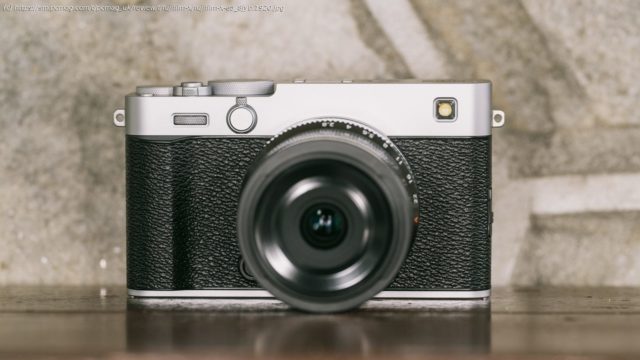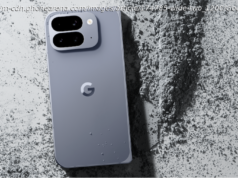Slim body style pairs perfectly with prime optics
The Fujifilm X-E5 ($1,699.95, body only) is a significant update to the X-E4 rangefinder-style mirrorless camera, a 2021 release that didn’t stay in the market for as long as it deserved. Like its predecessor, the X-E5 is as stylish as they come. The starting price is nearly double, but reflects an industry-wide uptick in camera costs and recent tariffs, as well as the addition of in-body image stabilization, and its premium 40MP X-Trans sensor. I am disappointed that Fuji left out weather sealing and stuck to an entry-level viewfinder, but the X-E5 still earns a strong recommendation because it’s the perfect compact body to pair with Fujifilm’s line of small XF prime lenses. I’ll continue to recommend the Panasonic Lumix DC-G9 II as our Editors’ Choice for creators who want a do-it-all crop sensor camera, but the X-E5 stands on its own as a rewarding, capable choice for photographers who prefer to carry a lighter kit.Design: An X100VI With Changeable Lenses
Like previous entries in the X-E series, it’s easy to liken the X-E5 to Fujifilm’s critical darling fixed-lens camera, the X100VI. Both feature a retro chic aesthetic with a corner viewfinder, and include a modest handgrip that pairs well with lightweight prime lenses, but proves less than comfortable for zooms and telephotos. They are evocative of rangefinder cameras like the Leica M11-P, minus the cost and esoteric manual focus experience. The X-E5 does not include an optical viewfinder like a Leica M or X100VI, so if you want that feature in an X-mount mirrorless camera, you’ll need to seek out a used X-Pro1, X-Pro2, or X-Pro3, but none are available new at this time.
Not everyone uses big lenses, so the X-E5 fills an important role in Fujifilm’s camera lineup: It’s the ideal body to match with smaller lenses like the XF 23mm F2.8 that’s available as a kitted option and others like the XF 35mm F2 R WR. By the numbers, the X-E5 measures 2.9 by 4.9 by 1.5 inches (HWD) and weighs 15.7 ounces without a lens attached, slight increases versus the X-E4 (2.9 by 4.8 by 1.3 inches, 12.8 ounces), but reasonable when you remember that the X-E4 does not include a sensor stabilization system, which is included in the X-E5.
The X-E5 is not the only small camera available in this class. Sony also uses a corner viewfinder for its compact a6700 (2.7 by 4.8 by 2.5 inches, 1.1 pounds), but matches it with a prominent handgrip for a camera that’s somewhere between an SLR and rangefinder body style in concept and execution. Meanwhile, photographers who already own Fujifilm lenses can consider the X-T50 if they’re after a compact SLR-style mirrorless camera. The X-T50 uses the same sensor and processor as the X-E5, and while there are some minor differences in features between them, their imaging and autofocus performance is equal.
The X-E5 is one of the prettiest cameras on the market, and it feels solid in the hand too. I received the body in silver and love the two-tone look made by the aluminum top plate and black leatherette, though it’s also available with an anodized black aluminum finish if you prefer a more discreet camera. As much as I love how good the camera looks, I’ll lament Fujifilm’s decision to skip out on dust and splash protection for this body, especially since it’s included in the X100VI and almost every other interchangeable lens camera that costs this much. If you want a camera with similar style that works with compact lenses, consider the OM System OM-3 as an alternative, but understand that it’s a bit larger than the X-E5 at 3.5 by 5.5 by 1.8 inches.
Fujifilm sells the X-E5 as a body only for $1,699.95, or in a kit with the XF 23mm F2.8 R WR for $1,899.95, a decent discount versus buying them separately, as the lens costs $499.95 a la carte. Since the XF 23mm F2.8 wasn’t available for evaluation when I reviewed the camera, I opted to pair the X-E5 with the XF 30mm F2.8 R LM WR Macro instead. If you prefer a different angle of view, consider the XF 16mm F2.8 R WR for wide angle coverage, the XF 35mm F2 R WR for standard, or the XF 50mm F2 R WR for a short telephoto angle.
The increase in price versus the X-E4, which debuted at $899.95, is sure to induce some sticker shock, but follows a recent industry-wide uptick in camera costs, along with the upgraded sensor and in-body stabilization system. At press time, a gently used X-E4 costs upwards of $1,100 at KEH, the largest used camera dealer in the US, which should give you some context on where the camera market is these days.Controls and Handling: Pairs Perfectly With Prime Lenses
The X-E series was built for use with Fuji’s slim XF prime lenses from the jump, and the X-E5 remains true to the core concept. The handgrip isn’t anything more than a bump, so you don’t get as much support with long, front-heavy zooms and telephoto lenses as with the larger X-H2 and X-H2S.
You can buy an add-on grip if you want more of a handhold; SmallRig makes both a front grip and rear thumb rest to go with the camera. I didn’t get to try either, but I’ve tried other SmallRig accessories in the past and they’ve all been good. I used the X-E5 with a different third-party accessory, the Peak Design Cuff wrist strap, and found it to be a good match for the small mirrorless body. If you prefer to let the camera hang by your side, the included braided shoulder strap is a nice touch, as most cameras ship with ugly straps.
I’m a fan of the X-E5’s control interface, featuring discrete dials to adjust shutter speed and EV compensation, which work in tandem with the on-lens aperture control. It makes it easy to switch between manual settings so you can take command of exposure when you want, or use the automatic (A) setting to let the camera make those decisions. I like leaving ISO to automatic and using EV compensation to brighten or darken an exposure, but you can set ISO manually via the front dial if you prefer. The dial approach may intimidate photographers who are used to a PASM mode dial; if you prefer this style, look to the Sony a6700 or Fujifilm X-S20 for a more familiar interface.
A shutter release, on/off switch, and a configurable function button are also on the top plate. The shutter button is threaded to support a soft release button or mechanical release cable. By default, the function button toggles human face and eye detection autofocus, but is configurable via the camera menu, as are most of the buttons and dials.
The X-E5 has a new control lever on the front, right next to the aforementioned dial. It’s a small addition, but supports five different actions: a button press, and both short and long pulls to the left or the right. By default, the lever allows you to set a digital zoom, change aspect ratios, and switch between the LCD, EVF, and eye sensor control. You can set the lever to do other things, but its crop options are handy, and since the images are 40MP to start, details still shine through, even with a crop.
I especially like that the digital crop has three Surround View framing modes. The Black setting zooms in the viewfinder to show the tighter view, essentially blacking out the cropped-out area. Line shows the full angle of the lens with a white frame marker indicating the crop setting, and Semitransparent uses a dimmed overlay to indicate the cropped-out area.






